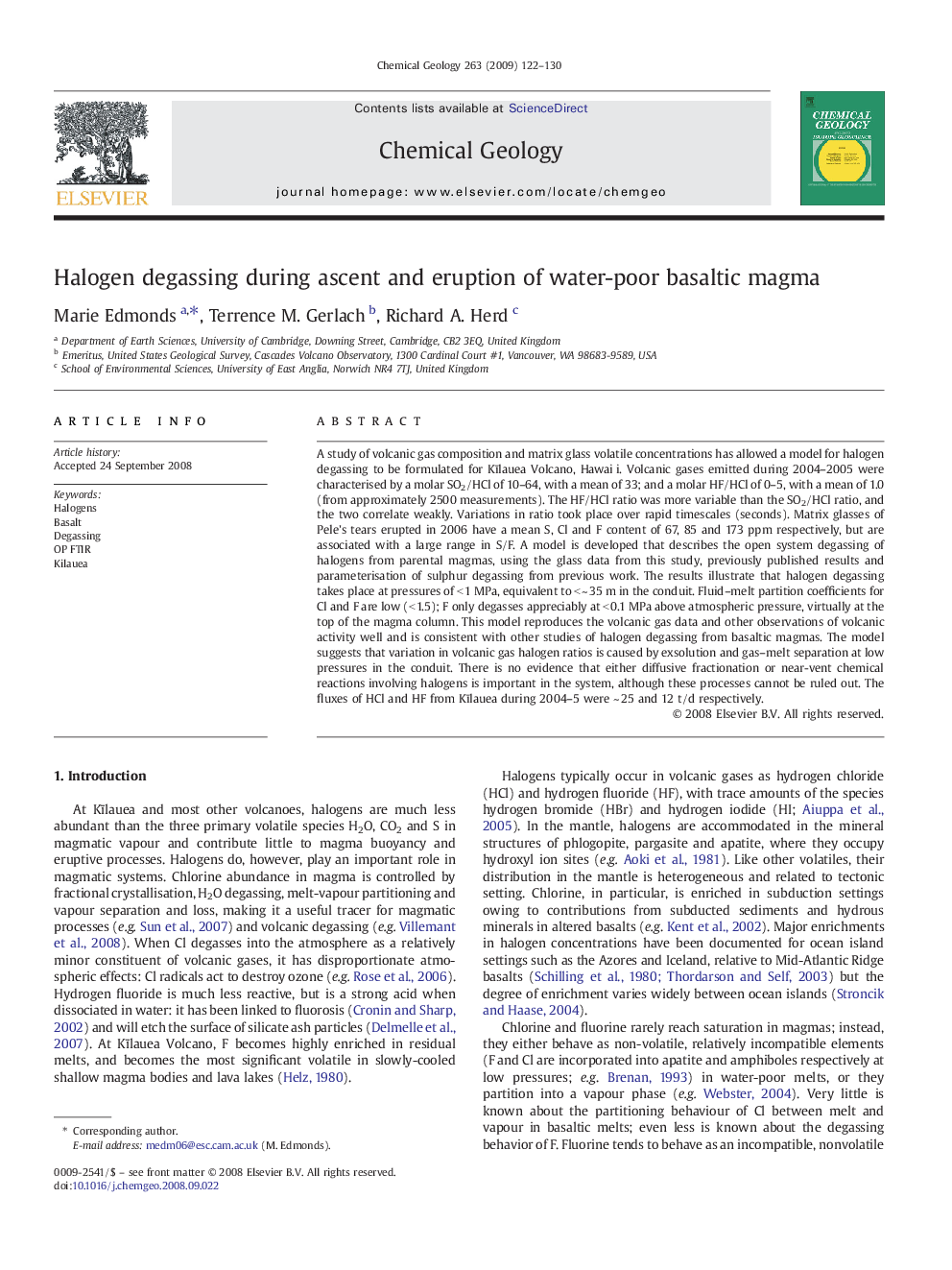| کد مقاله | کد نشریه | سال انتشار | مقاله انگلیسی | نسخه تمام متن |
|---|---|---|---|---|
| 4700251 | 1637706 | 2009 | 9 صفحه PDF | دانلود رایگان |

A study of volcanic gas composition and matrix glass volatile concentrations has allowed a model for halogen degassing to be formulated for Kīlauea Volcano, Hawaiʻi. Volcanic gases emitted during 2004–2005 were characterised by a molar SO2/HCl of 10–64, with a mean of 33; and a molar HF/HCl of 0–5, with a mean of 1.0 (from approximately 2500 measurements). The HF/HCl ratio was more variable than the SO2/HCl ratio, and the two correlate weakly. Variations in ratio took place over rapid timescales (seconds). Matrix glasses of Pele's tears erupted in 2006 have a mean S, Cl and F content of 67, 85 and 173 ppm respectively, but are associated with a large range in S/F. A model is developed that describes the open system degassing of halogens from parental magmas, using the glass data from this study, previously published results and parameterisation of sulphur degassing from previous work. The results illustrate that halogen degassing takes place at pressures of < 1 MPa, equivalent to < ~ 35 m in the conduit. Fluid–melt partition coefficients for Cl and F are low (< 1.5); F only degasses appreciably at < 0.1 MPa above atmospheric pressure, virtually at the top of the magma column. This model reproduces the volcanic gas data and other observations of volcanic activity well and is consistent with other studies of halogen degassing from basaltic magmas. The model suggests that variation in volcanic gas halogen ratios is caused by exsolution and gas–melt separation at low pressures in the conduit. There is no evidence that either diffusive fractionation or near-vent chemical reactions involving halogens is important in the system, although these processes cannot be ruled out. The fluxes of HCl and HF from Kīlauea during 2004–5 were ~ 25 and 12 t/d respectively.
Journal: Chemical Geology - Volume 263, Issues 1–4, 15 June 2009, Pages 122–130